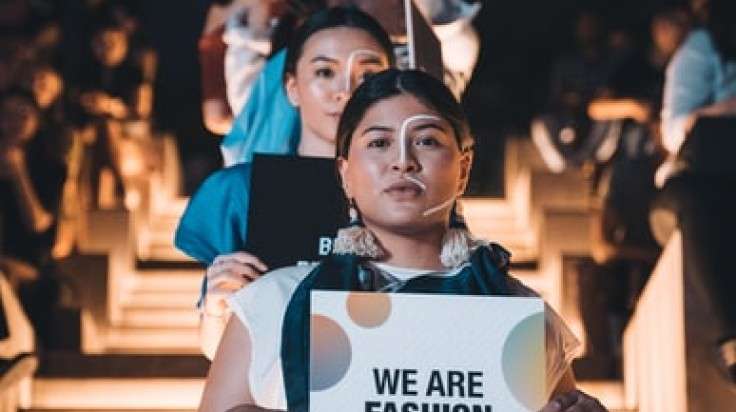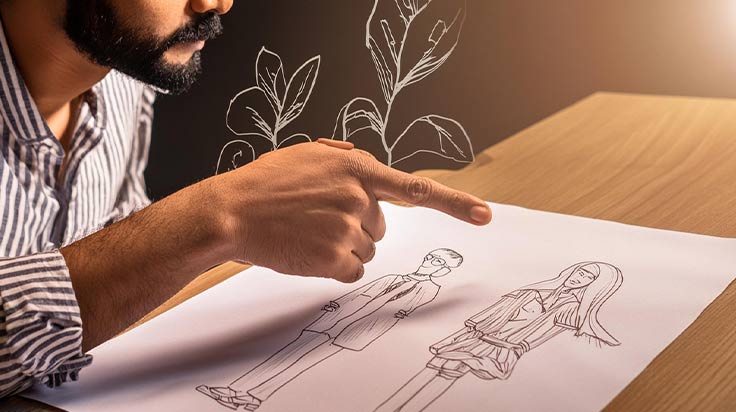The rise of sustainable fashion
- Ekta Kashyap
- Published 07/01/2022

Sustainable fashion has become a movement to reduce textile waste and environmental exploitation. The space is brimming with opportunities for young professionals who are fashion savvy, climate-conscious and empathetic towards society
It takes approximately 2,700 litres of water – the amount a person drinks in 2.5 years – to produce a kilogram of cotton. One kilogram of cotton is just about enough to make one t-shirt. Every year, around 2 billion t-shirts are sold globally. The amount of water consumed during the process is staggering.
And the overconsumption is not limited to water. Fast fashion – the production of unnecessarily large quantities of garments – has contributed severely to the depletion of natural resources and environmental degradation.
The fashion industry is the second-largest polluter in the world after oil and gas. It is responsible for 10% of global greenhouse emissions annually, according to the United Nations. Globally, over 100 billion garments are bought every year, out of which around 60% are made from non-biodegradable synthetic fibres such as polyester. Because of the throw-away culture, most clothes are, on average, worn seven times; 93% of the used outfits end up in landfills and can take up to 300 years to fully decompose. And the microplastics? They land straight inside the aquatic life and then on our plates.
As the world acknowledged climate change consequences, fashion, too, took notes on reducing its carbon footprint. In the 90s, innovators and designers started strutting towards ‘sustainability’ – a term introduced by the World Commission on Environmental Development in 1987.
Sustainable fashion became a movement to reduce textile waste and environmental exploitation. On the agenda were the following objectives: slowing down the global production and consumption process by reusing and recycling; replacing hazardous chemicals with environment-friendly, bio-based products such as natural fibres (hemp, jute, flax); deploying renewable energy to run the production; departing from the fast fashion phenomenon by taking something that already exists to make something new; extending the lifetime of every clothing piece; and educating consumers so they can become better equipped to make ethical purchasing decisions.
From niche to mainstream
Since the early 2000s, several steps have been taken by established powerhouses such as Louis Vuitton, Edun and Stella McCartney who have prioritised vegan products, and high-street labels such as H&M, which has pledged to use 100% recycled or sustainable materials by 2030. Fashion brands in India such as PECKD are moving beyond sustainable fashion to being 100% compostable. From the fabric to the thread and even the buttons, everything decomposes when buried in moist soil. None of the PECKD designer wear has plastic, rubber, or metal in any form. E-commerce platforms such as ‘Rent the Runway’ and apps such as ‘Depop’ have made it convenient to rent, sell or purchase used clothes to make fashion more ‘inclusive, diverse, and less wasteful’. India’s Harnaaz Sandhu, who was crowned Miss Universe 2021, won hearts with her quick wit and palpable confidence, and also made waves for her choice of wearing a gown made using recycled elements.

Studying sustainable fashion
For fashion aspirants who care about the planet, the first step towards making a change comes from knowledge. By enrolling in a fashion design course at a premier institute such as UPES, students learn the a to z of fashion including ‘Sustainable Design Materials and Processes of the Future Fashion Industry’ along with life skill courses such as ‘Ethical Leadership in the 21st Century’.
If you are enthusiastic about becoming a designer who creates positive change, apply here.
References:
- Gravitas
- United Nations
- Sustainable fashion journal
Ekta Kashyap
The writer is a part of the UPES editorial team
Tags
- school of design
- Sustainable Development
- Sustainable fashion
- UPES School of Design
UPES Admission Enquiry
Subscribe to UPES Blogs
Join our community for exclusive stories, insights, and updates
By clicking the "Subscribe" button, I agree and accept the privacy policy of UPES.

































